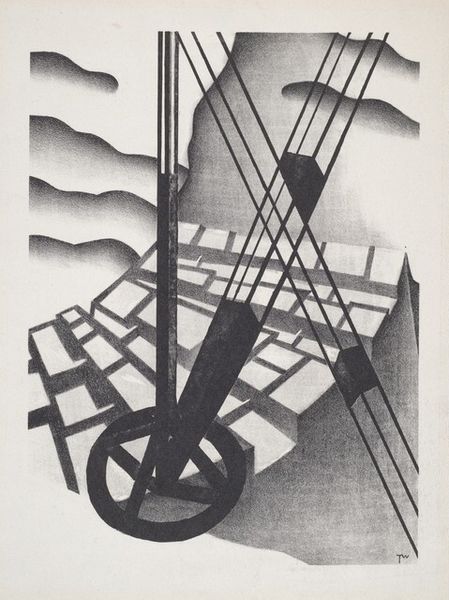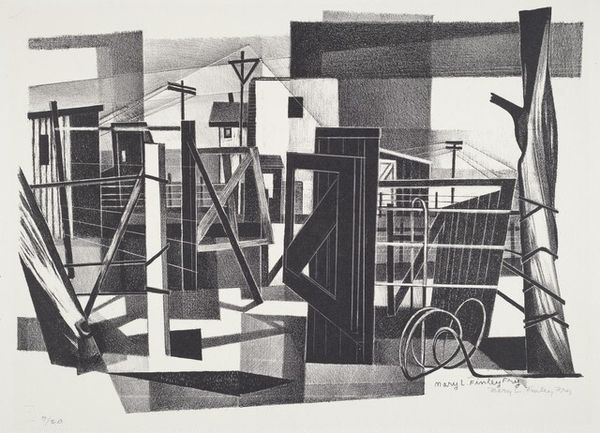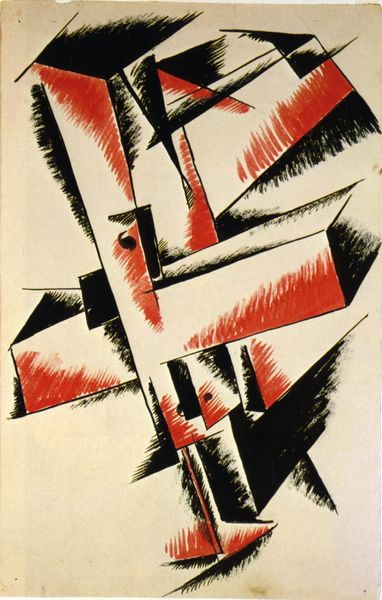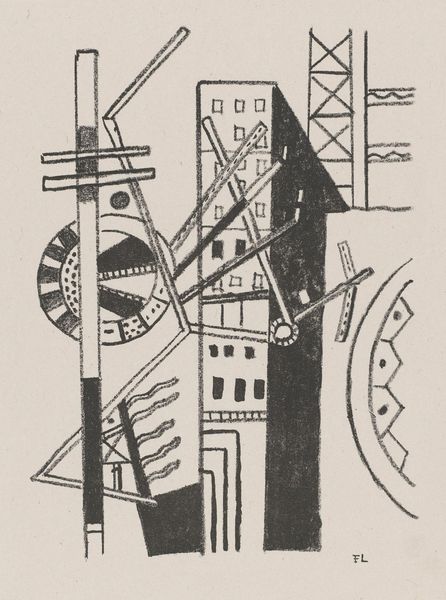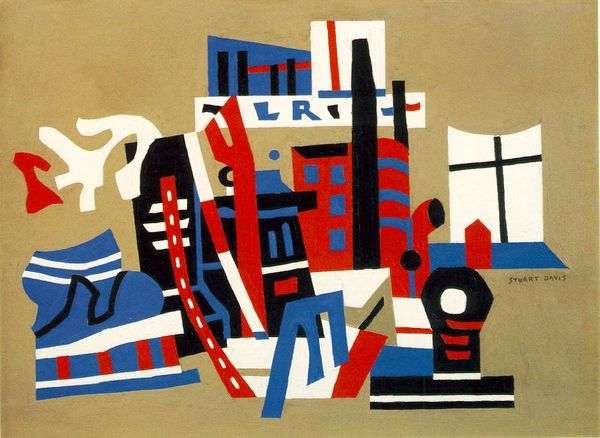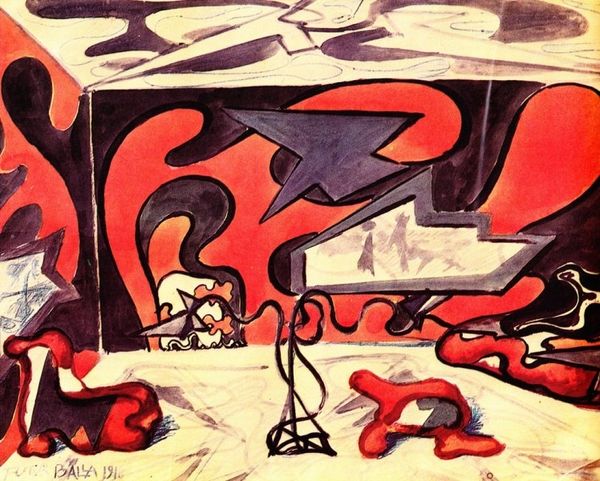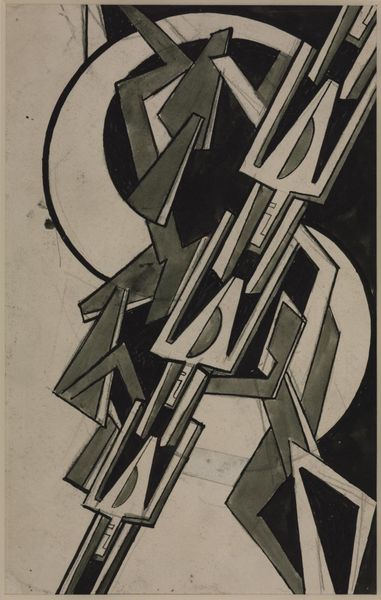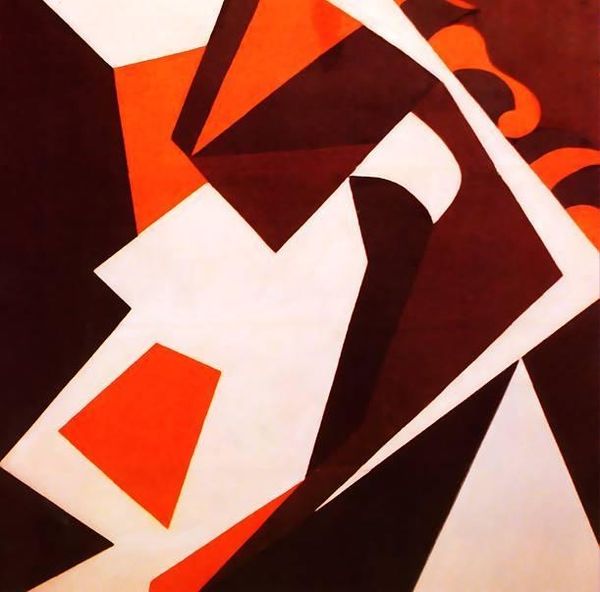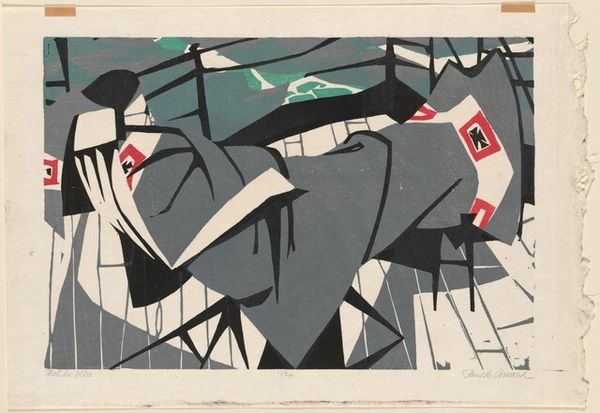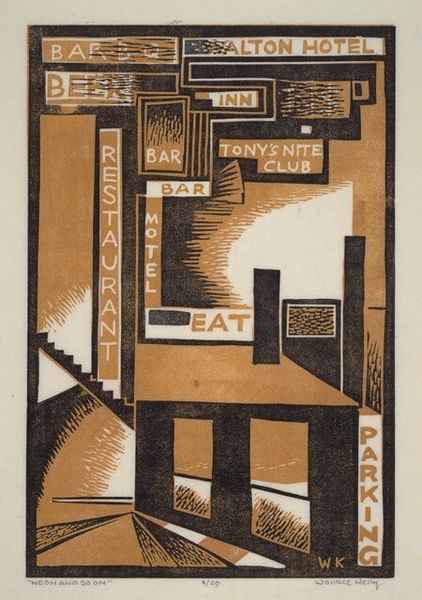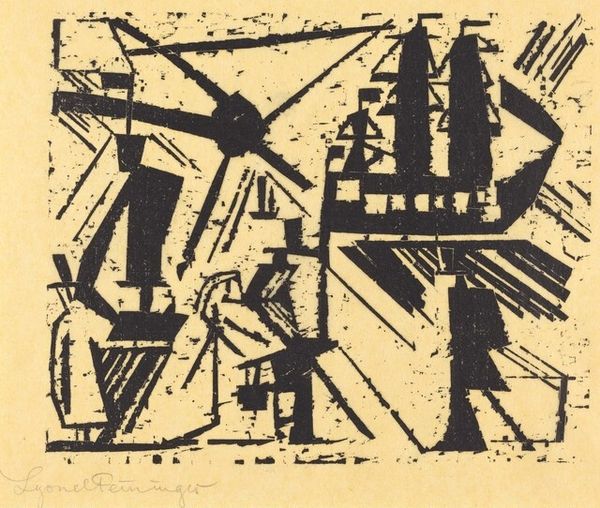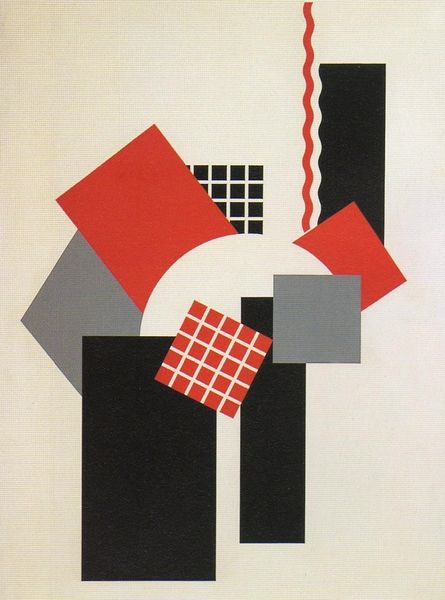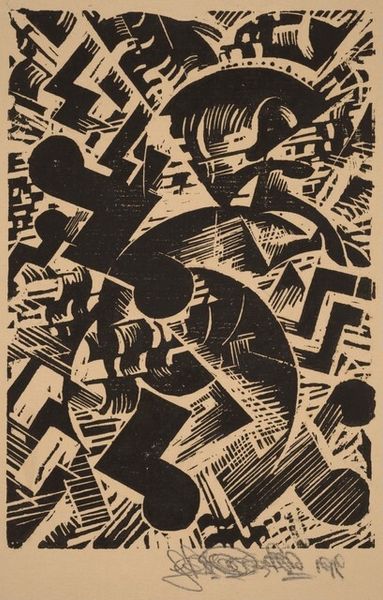
mixed-media, painting
#
mixed-media
#
abstract painting
#
painting
#
constructivism
#
soviet-nonconformist-art
#
figuration
#
geometric
#
line
Copyright: Public domain
Curator: Aleksandra Ekster's "Satanic Ballet," created around 1922, showcases a dynamic, almost dizzying array of forms using mixed media. It's a fascinating example of Soviet Nonconformist art. Editor: My immediate response is controlled chaos. It’s like a factory scene exploded and reassembled in a geometric funhouse. There’s tension in those diagonal lines, yet also a rhythmic quality, like a score. Curator: Absolutely. The composition demonstrates clear constructivist principles. Note the lines and shapes which emphasize volume. You see the clear desire to move beyond pure representation. Editor: And the figures! They are like worker automatons, but there is a disturbing passivity to their form. This isn’t the heroic ideal of socialist realism, right? More of an anxious choreography. Curator: I'd say this falls squarely within the Soviet non-conformist art movement. This style was in its day seen as a critique, whether intended or not. How those ideals play out is an interesting topic of historical interpretation. The title is interesting. Editor: It does suggest more than just machines. What kind of cultural context in the 1920s allows one to freely invoke "Satanic"? Curator: The early Soviet era was complex. Traditional forms of power were overthrown, but new ones, like the communist party, took their place. Ekster moved among avant-garde theatrical circles that weren't always directly controlled by the government, but could be later condemned as being politically misaligned. Editor: It’s the intersection of art and politics, isn’t it? These images—these ideas—were and remain powerful and complex cultural touchstones. Ekster may have explored these spaces between power. The dynamism and ambiguity continue to challenge our conventional interpretation. Curator: Precisely, it speaks volumes about a period of transformative social and political change, captured in this bold, disorienting ballet. Editor: It prompts me to examine critically who we depict in our narratives, whose stories get suppressed, and the many interpretations inherent to artistic representation. Curator: Well said.
Comments
No comments
Be the first to comment and join the conversation on the ultimate creative platform.
